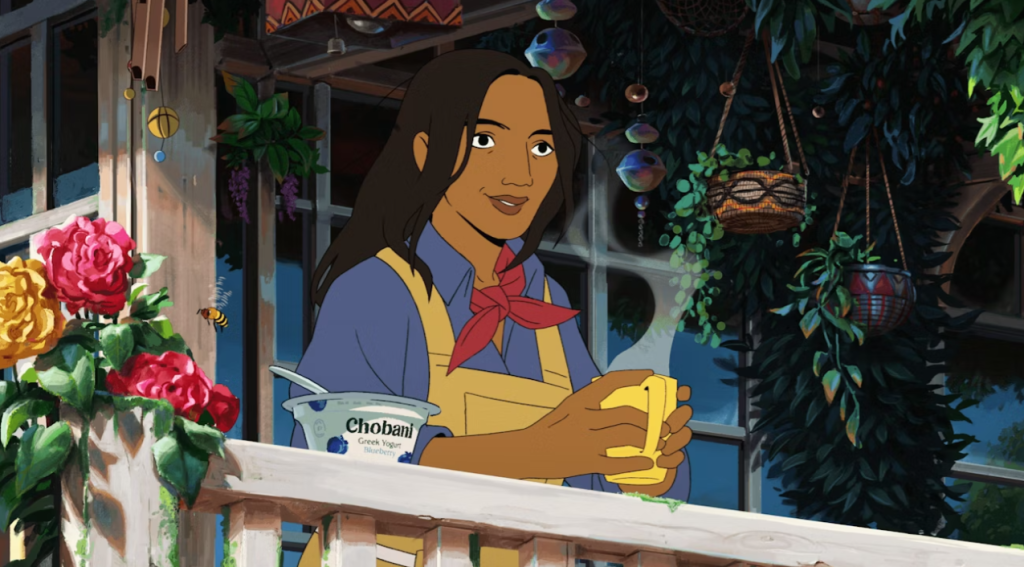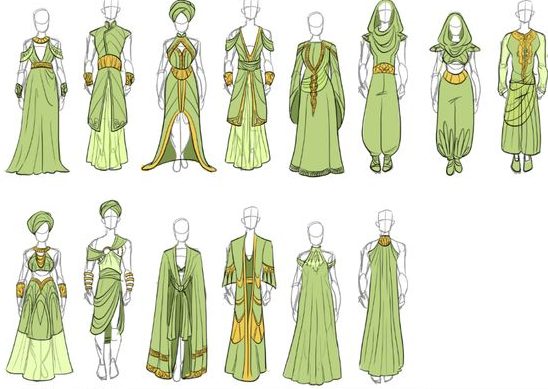Solarpunk fiction is the tag ascribed to an emerging field of visual and literary media, one that envisions potential futures characterised by sustainable technologies, urban biodiversity and socio-ecological harmony. The sub-genre comes as a response to the prevailing dystopian and post-apocalyptic narratives that predominate science fiction, illustrating hopeful alternatives to a bleak future. Within such stories, the major problems of the world today have been solved. Think: clean air, inclusivity and cooperatives. Whilst its predecessor cyberpunk is pessimistic, solarpunk is optimistic. The punk element arises purely from the assumed subversion of the oppressive systems which prevent an ecologically egalitarian existence. This, perhaps naïve, quasi-utopianism makes solarpunk stories a compelling medium through which to communicate political ideologies, alter aesthetic preferences and inspire real world innovation.
‘Fiction … allows us to stretch out our legs and walk around in the world we’re fighting for, if just for a moment’
– @OurChangingClimate via YouTube
The essence of fiction lies in the exploration of unlived experience. With that, solarpunk provides a springboard to investigate potential futures as little like the present as we wish. Punk literature, rooted in rebellion, thus becomes an essential mechanism for unveiling the inadequacies of our existing political systems. Whilst diplomatic discussions alone ‘lack engaging narratives’, anecdotal tales ‘fill those frameworks with emotion and passion’. Dystopian authors, say Atwood (The Handmaid’s Tale) and Orwell (1984), speculate upon fictitious futures rife with totalitarianism in order to broadcast and exaggerate contemporary political context. Solarpunk novels, on the other hand, flip the status quo completely. This idyllic visionary lens provides societal escapism, lightyears from fossil fuel capitalism.
For me, discovering the aesthetic of solarpunk felt like opening my eyes, having lived in blindness, to see exactly what I’d hoped the real world would look like: fluorescent blooms and shamrock shaded moss intermingling with great porcelain skyscrapers; glasshouses and green space; sci-fi bots of all assortments gliding upon the skyline. Here, citizens tend to urban farms and catch public transit as a political statement more than a chore. A sense of community in anarchism lingers.

It’s evident that science fiction, especially the -punk division, profoundly stimulates our greatest imagination and broadens our awareness of what is possible. But, stories can do so much more. Character-driven and emotionally engaging narratives inspire post-narrative actions. At least, that is what neuroscientist Paul Zak’s publication ‘Why Your Brain Loves Good Storytelling’ would have us believe – just in more scientific terms, ‘oxytocin synthesis’ and such. A similar study ‘Reading for peace? Literature as activism’ draws parallels with Zak’s conclusion in stating that literature imparts ‘necessary aspects of peace activism’ like ‘empathetic learning’ and ‘critical reflection’. Solarpunk fiction, then, could materialise within the political playing field as a proxy for pro-environmental activism. We need more than manifestos and parliamentary ping-pong to truly invoke our political senses. Taking a moment to live vicariously in an egalitarian world is what will drive our desire for change.
Goodreads has now listed 623 ‘Solarpunk Books’, and a just brief scroll displays the nature-doused semantic field of solarpunk fiction. ‘Glass and Gardens’. ‘Multispecies Cities’. ‘Suncatcher’, hinting both at the man-made iridescent trinkets, beautifying the natural elements, and the technological capture of solar energy. Words like ‘sweetgrass’, ‘windseeker’ and ‘biodome’. The list goes on. And, this cultivated aesthetic, instigated by literary vision, is slowly seeping into the mainstream.
As a die-hard Pinterest user, my worldview may be warped by an algorithmic dashboard but I don’t think I’d be mistaken in claiming an aesthetic shift in textiles has taken place. It is one of earthy tones like sage and indigo; utility wear with cargo pants and pockets; ‘grunge, revisited’ through mismatched and make-do fabrics. A quick scroll on Depop – the virtual haven for today’s modish youth – exhibits our new-found preference for loose-fitting trousers, chunky socks, jorts and dad trainers inciting a vision of pedestrianised mobility, whilst the unisex vibe leans into a more androgynous landscape for fashion. The platform also advertises a transition towards independent and handmade pieces like crochet cover-ups and upcycled jewellery, epitomising the eco-conscious influence of solarpunk.
Artistically kindred to this creative shift is solarpunk architecture – described as ‘a coating of Art Nouveau blended with African and Asian aesthetics‘. Solarpunk, or sustainable, architecture is now dominated by concepts of biomimicry and biophilia. The former is the notion of mirroring nature’s structural integrity within man-made constructions such as the aerodynamics of birds’ wings and whales’ tails or the lattice weave of a marine exoskeleton. The latter denotes the human desire to interconnect with nature, especially by incorporating greenery in and around ones living environment. Such structures are popping up on architectural forums, conceptual design platforms and even outside of cyberspace, here on earth – the Bosco Verticale in Milan, for example.
Science fiction has played a major role in influencing design and technology, be it Star Wars’ bionic limbs and holograms, or Star Trek’s ‘hand-held communications device’. Moving forwards, it’s more important than ever that our pop-cultural fixations double as fuel for more sustainable projects. From renewable energies to precision agriculture to green urban design, solarpunk fiction offers the ideal canvas for this inspiration – demonstrated by 2008 feature film, WALL-E. Writers, Andrew Stanton and Pete Docter, quite cleverly predicted we would create robots to sort out our recycling. Some would argue that we only developed this technology because the idea was laid out for us in fiction.
A crucial distinction, however, must be made. Solarpunk is not ecomodernism – which is instead based on an ‘rose-tinted‘ and ‘ahistorical‘ view in favour of hyper-urbanisation and free market capitalism. Ecomodernism is, in essence, throwing ‘green sh*t‘ everywhere with little view to cultural or geographic influence, and masking and perpetuating a system built on global inequalities. There is no ‘-punk’ to ecomodernism, because it denies the notion of any struggle in the first place.
Definitively ‘solarpunk’ nuances can still be found in sci-fi fiction – the city of Birnin Zana, Wakanda, for instance. The capital, featured in blockbuster Black Panther, is ‘unfocused and sprawling’ and ‘follows the contours of the natural features’; towering edifices, both ‘contemporary and traditional‘, intermingle with the grassy summits upon its horizon. The city runs on public transport and pedestrianised space, not cars. Structures and materials are fitting for the locale. Architectural researcher, Sam Williams, likened Marvel’s ecotopian vision to existing cities like Johannesburg and the Kingdom of Lesotho, grounding the fiction in reality. This fusion of afro-futurism and biophilia re-centres science fiction away from euro-centric hegemony, inviting fresh perspectives on future landscapes of existence.
This dynamic and adaptive current of solarpunk fiction is appearing elsewhere in mainstream media. Animation company, The Line, produced a spellbinding commercial piece for Chobani. The ad, titled ‘Dear Alice’, is a spectacle of techno-cooperative agriculture: berry-picking bots and solar-powered transit, free roaming cattle and resident pollinators; excess produce is donated, and the farming community, diverse in nature, reap what’s been sown at meal times. The emphasis is placed not on a sky-scraping central business district but instead the family home, unique in its architecture and ornaments, and in a style reminiscent of beloved Studio Ghibli productions, owing partly to the feature of Joe Hisaishi as its musical composer.
In essence, solarpunk fiction allows environmentalism to thrive in a world where creativity does not go to die.


Source ‘Dear Alice’ by The Line.






Leave a comment